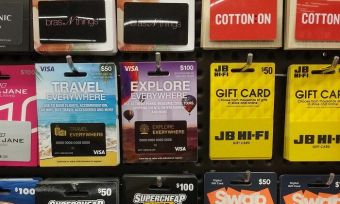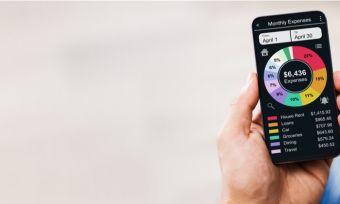Unfortunately, I fall into the latter camp. I know it’s not exactly the most thrifty thing to do, but filling up always seems to slip my mind until I see my tank is nearly empty.
But with petrol prices increasing, I’m hoping to rethink my petrol habits. According to the ACCC’s latest petrol monitoring report, the average retail price for petrol across Sydney, Melbourne, Brisbane, Adelaide and Perth increased by 8.6 cents per litre (c/L) in the June quarter.
So I’ve asked Canstar’s researchers to crunch the numbers to find out how much I could save if I tried out these three new habits:
1. Using a fuel app
One of the easiest ways to save money on fuel is to use a fuel app. These apps show you up-to-date fuel prices, so you can find out who is offering the cheapest deal in your area.
Canstar’s researchers found fuel prices could vary by about 14.8 c/L on average within one local government area, based on filling up with unleaded petrol in New South Wales or Queensland in July.
For a large family car with an average tank capacity of 63 litres, that could equate to a saving of about $9.32 per tank and $128.91 per year. That’s assuming you travel 12,100 kilometres, which is the average distance travelled by vehicles in a year according to data from the ABS. This would require a total of 871 litres of fuel.
Many state governments have their own apps, including FuelCheck (NSW), FuelWatch (WA), MyFuel NT and FuelCheck TAS.
There are also third-party apps like MotorMouth, Fuel Map, GasBuddy and Petrol Spy, as well as apps from motoring organisations like NRMA and RACQ. Some states, like Queensland and South Australia, have fuel transparency schemes so petrol stations are required to share their price data.
Fuel apps can also show you where you are in the current price cycle. Fuel prices usually move in regular cycles where they go down for a period of time, before sharply increasing. So if prices seem to be at a high, it might be better to hold off on filling up and wait until prices drop if you can.
Is it worth driving further for cheaper fuel?
A recent survey by Canstar Blue found that around one in five of us would be willing to drive a little bit further to save money on fuel. So if you find a cheaper deal but the station is a few k’s away, is it worth it?
The answer to this will depend on your car and its fuel consumption, as well as how far you are driving and the cost of fuel.
For example, a large family car consumes about 7.2 litres per 100 kilometers (or 0.072 litres per kilometre) on average. Using an average standard unleaded price of 152.8 c/L, that means it costs about 11 cents per kilometre travelled. So, if you drove an extra 10 kilometres for petrol, that would cost you $1.10. To figure out whether it’s worth it, you’d need to weigh this up against how much you could save by getting the cheaper petrol. For example, if you could save 10 c/L on fuel by driving that extra 10 kilometres, this could save you $6.30 to fill up your tank in full. In this case, it could be worth it from a cost perspective to drive further. You’ll also need to make adjustments if you are filling up a partially full tank, rather than an nearly empty one.
Here’s how much it could cost you to drive an extra kilometre (in cents), based on different vehicle and fuel types:
← Mobile/tablet users, scroll sideways to view full table →
| Vehicle and average fuel consumption |
Average cost of standard diesel (c/km) |
Average cost of standard 91 unleaded (c/km) |
Average cost of premium 95 unleaded (c/km) |
|---|---|---|---|
|
City car |
7.4 | 7.8 | 8.5 |
|
Small family car |
9.0 | 9.5 | 10.4 |
| Large family car (7.2 L/100km) |
10.4 | 11.0 | 12.0 |
|
SUV |
11.0 | 11.6 | 12.7 |
| Ute (8.6 L/100km) |
12.5 | 13.1 | 14.4 |
Source: Budget Direct, FuelCheck NSW, QLD Open Data Portal. Prepared by Canstar on 11/08/2021. Average fuel pump price is 145.1 c/L for standard diesel, 152.8 c/L for standard 91 unleaded and 167.2 c/L for premium 95 unleaded and is based on data from NSW and QLD for July 2021. Average fuel consumption by vehicle class based on Budget Direct’s Car Range Statistics, which are based on the 100 top-selling cars in Australia in 2019 according to CarsGuide.
2. Using supermarket fuel discounts
Another way to save is by using supermarket fuel discounts. Both Coles and Woolworths offer a 4 c/L discount on fuel if you spend $30 or more on groceries. You can redeem the Coles discount at Shell Coles Express stations and the Woolies discount at Ampol stations.
Coles Express also offers a further 10 c/L discount if you spend $20 on eligible products in-store when you’re filling up. While we don’t recommend buying products for the sake of a discount, it could be worthwhile if you’re already planning on making the purchase.
For a large family car, Canstar found you could save $2.52 per tank with a 4 c/L discount and $8.82 per tank with a stacked 14 c/L discount.
While this may seem like a small saving, over time it can add up. For example, if you used a 4 c/L discount each time you filled up, you could save about $34.84 per year. With a stacked 14 c/L discount, you could save $121.94 per year. Again, assuming you travelled the average distance per year.
Terms and conditions apply for various supermarket fuel discount offers, and you can usually check a relevant website for details.
3. Using motoring club and other fuel discounts
Many motoring clubs also offer fuel discounts at selected petrol stations. NRMA offers its members a 3 c/L discount on regular fuel and a 5 c/L discount on premium fuels at participating Ampol and Caltex branded service stations.
RACQ offers members a 4 c/L discount at participating Puma and Pacific Petroleum stations. RAC also offers a 4 c/L discount at Puma and Better Choice to its members in WA, as well as participating PUMA, Matilda, Choice and Mobil stations in other states. Lastly, RACT offers a 6 c/L discount at participating United stations in Tasmania.
You can also get Coles Express discounts through CarSales.com.au and Linkt. CarSales currently offers an initial 8 c/L discount, followed by a 4 c/L, if you add your car and its odometer reading to the CarSales app. If you have a Linkt toll account, you can get a 4 c/L discount, which can be redeemed online or through the app.
These two discounts can be stacked with the 4 c/L shopping docket discount and the 10 c/L spend in-store discount, so you could potentially save up to 18 c/L per litre on fuel in some regions, subject to T&Cs. That means a large family car could potentially save up to $11.34 per tank and $156.78 per year.
There’s also the 7-Eleven app that comes with a ‘Fuel Lock Feature’ that lets you search nearby 7-Eleven stations and lock-in your price for a week.
So, there’s a few different ways you may be able to squeeze out a discount at the bowser, and if you’re able to adopt more than one method, you may be able to save yourself hundreds. Happy driving…
Cover image source: Vladyslav Starozhylov/Shutterstock.com
Thanks for visiting Canstar, Australia’s biggest financial comparison site*
This content was reviewed by Sub Editor Jacqueline Belesky and Finance and Lifestyle Editor Shay Waraker as part of our fact-checking process.







Share this article